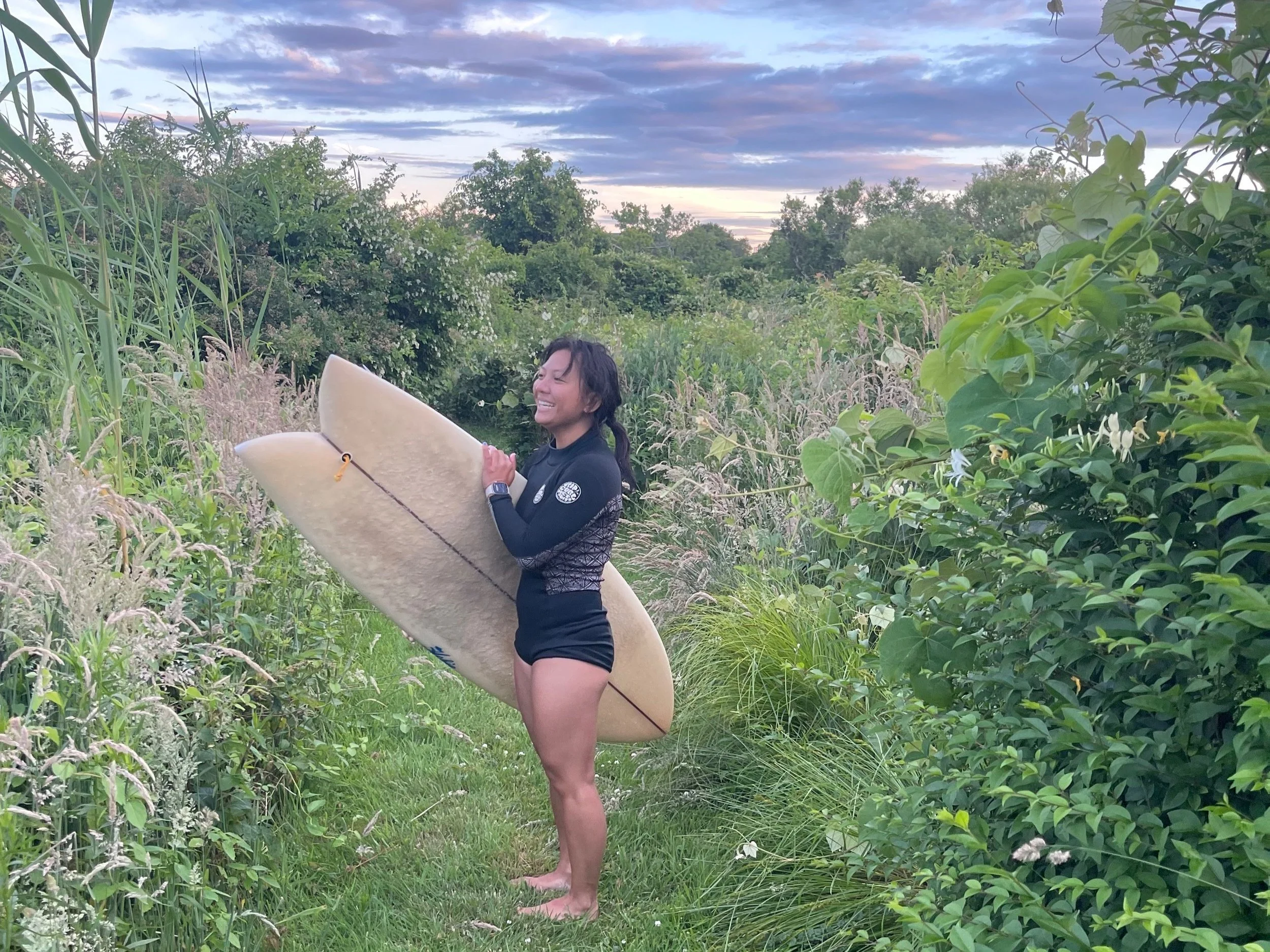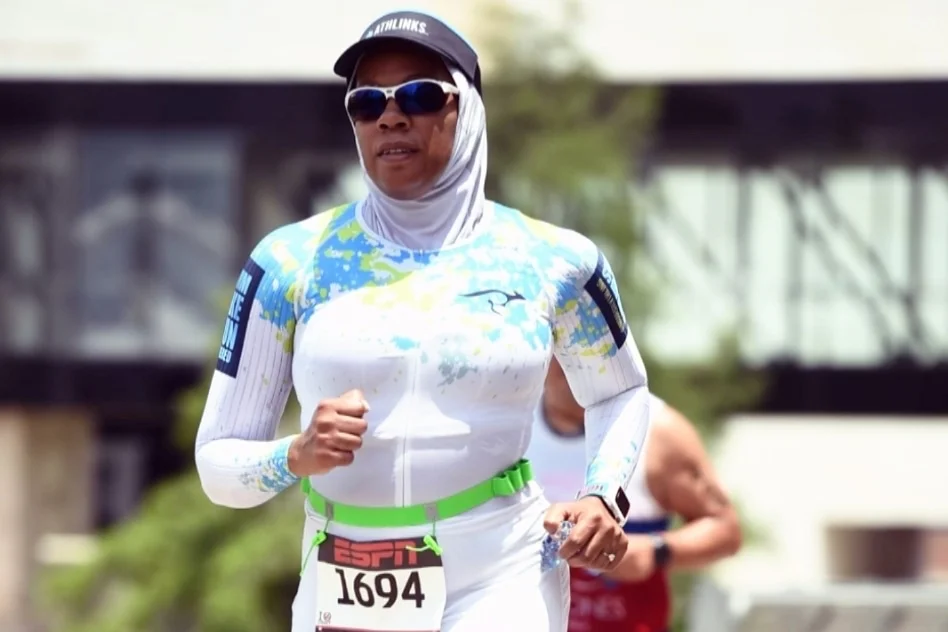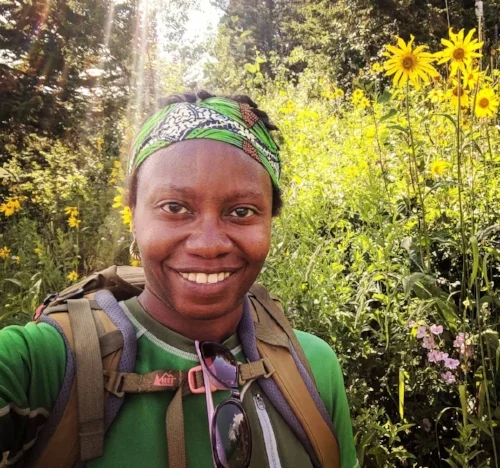These Six Black Adventure Athletes Are Defying Gravity
Contributing Photographers: Melvin Williams, O’Shea Abney, Concrete Foxy, Kimberly Weglin, Eric Arce, Thiago Barreto
People have long been fascinated with human flight. Maybe it’s a seed planted in us from birth. Why else would so many of us spend our childhoods leaping off furniture, out of trees, and from playground equipment. We watched the birds soar and found a way to emulate them. Even as adults, many of our fictional superheroes have the power of human flight, defying gravity in ways we can only dream of.
The truth is human beings have always found ways to play on the edge of gravity, relying on daring, skill and innovation. These six Black athletes are pushing their boundaries and defying gravity in the air, at their local skate park and in the mountains.
SKATE
Roller skating has had a return in popularity over the last few years. Not just the group skates of middle and high school, or the soulful roll bounces of decades prior. These days, skaters are getting dynamic with their expression on the concrete waves and bowls.
Sora Rochon just turned 26 this year. She decided to start skating on a whim, without any specific goals or ambitions, after moving to Oceanside, CA.
“I just wanted to go to the park and feel like a badass,” she recalled. “Every single day of falling and learning filled my life up with so much fun.” It was also a way of making an unfamiliar city her own.
The process of making mistakes and slowly mastering new techniques is a big part of the appeal. As long as her physical body is able and her headspace is good, then it's a great day to skate. “I skate when I’m angry, happy, depressed, whenever,” Sora explained. “Skating is the only thing I can make myself get up and do sometimes.”
The skating community initially felt intimidating for Sora but the pull to be outside was always there. “The community is pretty welcoming, which I didn’t expect,” she added. Her favorite thing about skating is that almost anyone can do it, at any point in life. Of course, that doesn’t mean her experience as a Person of Color skating in mostly white spaces has been frictionless.
“It can be disappointing at times,” Sora admitted. “There is this perception that I am invalid because I am not “struggling enough” or the idea that because I didn't have the privilege of skating since I was five that I shouldn’t be able to enjoy the skatepark.” Above all Sora skates for herself—for the simple pleasure of it. “I don't skate to prove a point to others, but I do enjoy being Black in a space that someone usually wouldn't be,” she reflected.
Photographed by Concrete Foxy
SLACKLINING
You’ve probably seen slacklines at local parks if you live near or in a region with ample parks and structures to string the webbing used between two posts or trees. At first glance, slacklining brings tightrope walking to mind. In practice, it’s an accessible sport that focuses on balance training, recreation and meditation through movement. The slackliner traverses a 1”-2” wide length of nylon/ polyester webbing between two anchor points (e.g. - lamp posts or trees).
Highlining is slacklining with a view. Similarly to tight rope walking, it’s known for a tight-knit community of practitioners and uses a host of safety techniques like leashes, skilled rigging, and safety nets at times to account for and prevent falls.
Paloma C. Galvão Cardoso is a 30-year-old slackliner from Brazil. She was first introduced to it in a local park in her home town of Goiânia and has now been a practitioner of the sport for 10 years. About three years ago she began highlining. “I started practicing highline for the adrenaline, the challenge of balancing myself at great heights,” Paloma reflected. “It was a new way to interact with nature, to spend time with friends and the opportunity to learn something new.”
Paloma has taken part in several challenging projects like a 100m long x 80 m high line above an intersection in Belo Horizonte as well as a 130m long x 400m high line on Agulha do Diabo. Agulha do Diabo is one of the most imposing mountains in Brazil. The expedition was developed and undertaken by women, with a few men participating, and was filmed for a documentary.
When asked about her experience as an Afro-Brazilian participating in a sport whose demographic is mostly white males she agreed that gender definitely adds to the experience. “For a long time I was the only woman on the expeditions I participated in,” she explained. “There were already Black men, but in reduced numbers.” While discussing the implied racial and gender issues present in Brazil (and in every country) is not an easy task Paloma remains hopeful. “I still believe that my presence can inspire other people,” she added. “
Photographed by: Pedro Rettore
Cheyenne Smith, 23, returned to slacklining during quarantine. Though she had practiced off and on since she was young, it wasn't until lockdown that she decided to purchase a new slackline. It turned out to be a great way to get back out of the house and get her body moving. She saw her first highline while living in Australia where a few friends had set a line over a coastal cliff. That experience inspired her to try it.
When asked about the complicated headspace required on the highline Cheyenne explained, “Sometimes when you get on a line, your mind goes blank and it's the best flow state of your life; sometimes, it can't stop racing with every single thing going on in your life.” The liminal space between fear and flow state is what she loves about it. It allows her to check in with herself mentally, breath and meditate through the process. “It's a pretty surreal feeling, observing the moment and moving through it with intent,” she explained.
Cheyenne attributes the size of the highlining community to one of its greatest benefits: instant friendships. “Everywhere I travel, I find the local Facebook page and meet up with local slackliners at a park,” said Cheyenne. “It's the most supportive, inclusive, and grounded community I’ve come to know.”
The sport has also helped her appreciate the beauty and functionality of her local park. “Slacklining has been a way to connect with the outdoors,” she explained. “The ease of access to the sport and entry to community are big draws.” These things have allowed Cheyenne to change her outdoor narrative to encompass fun without the pressure of sending—although she does like that too.
Her love of slacklining actually got her to move to Utah to be closer to well-known desert lines. Moving to the desert was a dream she had since she began participating in the sport. “A desert is a place without expectation,” she explained. “It forces you to feel small, to humble yourself, and feel magic that’s hard to define.”
Traveling to slackline and highline has also taken Cheyenne to places like New York. “I went to go slackline in New York and it was a huge breath of fresh air seeing the diversity in the local slackline scene,” Cheyenne said. She hopes that one day the experience she had there will be reflected in all areas. Even so, she commented, “This is the most accepting outdoor community I have ever been a part of.”
Photographed by: Landon Hale
Aaron Bray , 29, started slacklining five years ago. After a few tries he was hooked. He quickly added highlining to his list of interests thanks to the influence of close friends. Having the time, access and connections helped gain entry into the sport. Aaron explained, “I was living in the perfect place and had met amazing people who began to mentor me in how to engage in this sport safely.”
Recently, on a challenging project in the Colorado mountains, Aaron and his friends faced difficulties in setting up a 300m line. “The most challenging part was all the work required to set up the line,” he reflected. “It required a knowledgeable and competent team, a whole assortment of rigging gear and supplies, and a lot of foresight and planning.” Hauling all of the required gear into the mountains of Colorado was also no simple task.
Bray lives near Boulder, Colorado and thinks the region leans towards “wokeness” at times. “I feel like people go out of their way to be overly polite in an attempt to not offend you,” he emphasized. “Which can carry its own hazards.” He explained that the highlining community's central tenet of treating people with respect and being a good person creates a welcoming vibe. Outside of the the community though he has faced incredulous comments or questions about his place in the sport. “Often people will try to downplay my skills or accomplishments as though I am just crazy or wild or an adrenaline junkie,” he said, thoughtfully. “I’ve often had to prove myself or explain that I am actually an athlete.”
But no matter the obstacle Bray feels better knowing that he is pursuing his passion, breaking stereotypes and pushing himself past the box the world tries to put him in. Highlining has deepened his connection with his community and with nature. He reflected that, “Growing up in a family that placed an emphasis on hard work and labor meant that his outdoor adventure pursuits were initially met with sidelong glances.” Despite that, the knowledge that Aaron is happy and full of life makes his family happy for him. That support mirrors what he finds in his chosen community.
Photographed by: Kimberly Weglin
BASE Jumping
While slacklining and highlining defy gravity through a careful balancing act, the next athlete defies gravity by surrendering to it. BASE jumping is an activity in which participants use a single parachute to jump from fixed objects. “B.A.S.E.” is an acronym that stands for four categories of fixed objects: buildings, antennae, spans (bridges), and earth (cliffs).
O’Shea Abney, 27, is a BASE jumper who got into the sport 1.5 years ago through a few friends. Since then, the sport has helped him enjoy the outdoors on his own terms. “There are some amazing views on the hike up to the exit point,” Abney reflected. “In BASE, every structure has a different beauty to it.”
The lack of ego when it comes time to the community also strongly appealed to him, “No matter how many jumps you have ,” Abney explained “when it comes to jumping we are all in this together.”
For him, BASE is a space where all are welcome.
It’s a dangerous sport that and the challenges that come with it are unique. Long hikes, low clouds, crosswinds, nighttime jumps and the need for secrecy due to complicated access and legality can conspire to make a jump more high risk. A study that examined BASE jumps off a single cliff in Norway over a ten year period assessed the odds of dying at 1 in 2,317 jumps or .04%. In reality, the odds vary according to factors like the type of BASE jump, the location and the headspace of the athlete since most fatalities, according to user-generated database BLINC magazine, are due to operator error.
To get into the proper headspace for each jump O’Shea thinks about his family and friends. “I make sure I’ve told them I love them,” he added. Then he makes a mental checklist of his parachute pack job. After that, it's time to go!
Photo credit: O’Shea Abney
FLIGHT
It’s only fitting that we end with powered flight—one of humankind’s greatest technical achievements! The first successful airplane flight in Kitty Hawk, North Carolina in 1903 was swiftly followed by aviation’s Golden Age and the development of aerobatics. Back then, flying itself was an extreme sport. Barnstorming or flying circuses became popular in the 1920s as a surplus in former WWI pilots and a surplus of Curtiss JN-4 “Jenny” biplanes transformed the general aviation community. Crowds gathered to see pilots execute spins, rolls, and loops. That included famous African American aerobatic pilots Bessie Coleman and James Banning.
Today, aerobatic politics continue to push their physical and mental limits in the sky with precision flying. Aerobatic flight refers to the maneuvers you may see at airshows and in movies, nothing you'd want to experience on a quick flight back home to see the family.
Mel Williams, 34, is an aerobatic pilot. He began his aviation career as an aircraft maintenance technician. There were many days he used to think about becoming a pilot but eventually decided that the opportunity had passed him. It wasn't until a chance conversation with a pilot at work led him to be in the cockpit of a plane again. That experience and encouragement empowered Mel to earn his private pilot's license in 2018. All of this still feels like a shock to Mel, “I started flying in January 2017,” he explained. “Now, I am a Flight instructor. I honestly never saw this coming.”
While still in flight school Mel had a chance to go for a ride in an aerobatic aircraft. After a single roll he was hooked. He began looking into aerobatic flying and found the Red bull Air Races on TV. After that he discovered Anthony Oshinuga on Instagram. “That was the first time I had seen an African American aerobatic pilot,” Mel reflected. “I was even more inspired to get out there and learn!”
Mel and a few others have been trying hard to bring new blood into the sport. He explained, “There are only a handful of pilots out there and it is a struggle because of lack of exposure.” Despite this Mel credits the flying community with being extremely supportive and helpful. The unique nature of the sport allows for random meetups, or fly-ins, and opportunities for new connections. Hopefully with time Mel and others can bring more new folks into the world of aerobatic flight!
Photo credit: Mel Williams

















Having an injury forces us to come face to face with who we are outside of our sport. And sometimes, we don’t like what we see. When you’re sidelined, sitting in your room, staring at the ceiling, wondering what comes next, who are you then?
“This is a time when you’ll learn a lot about yourself,” Kim said. “Just keep going. And listen to your body.”